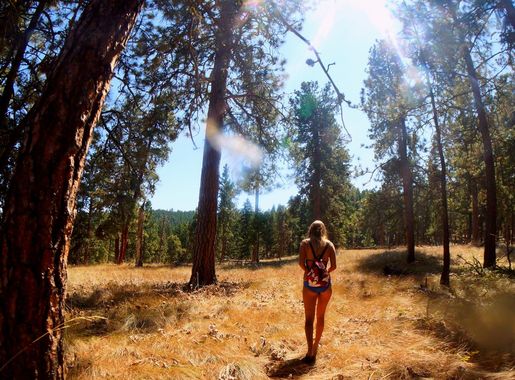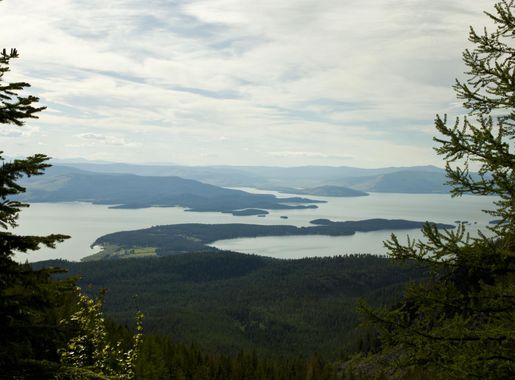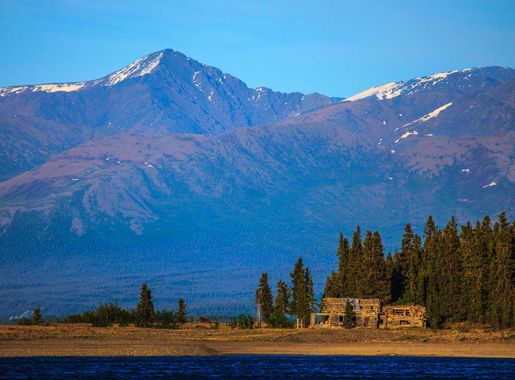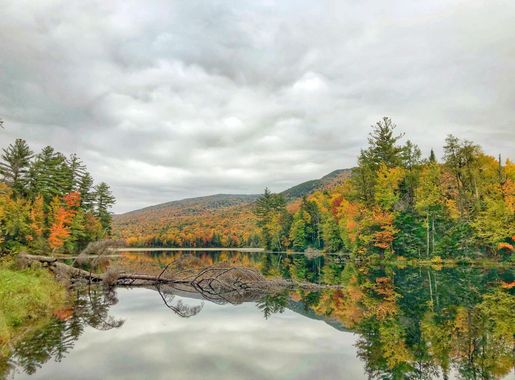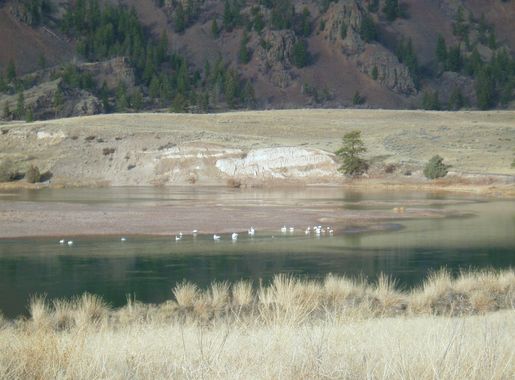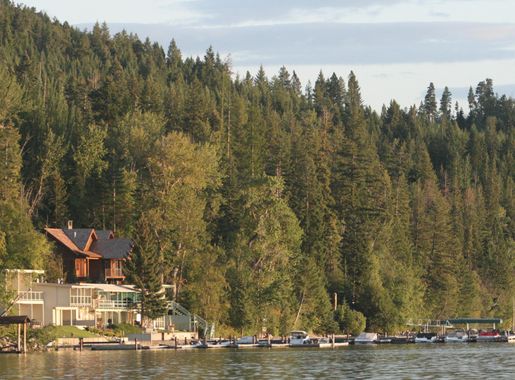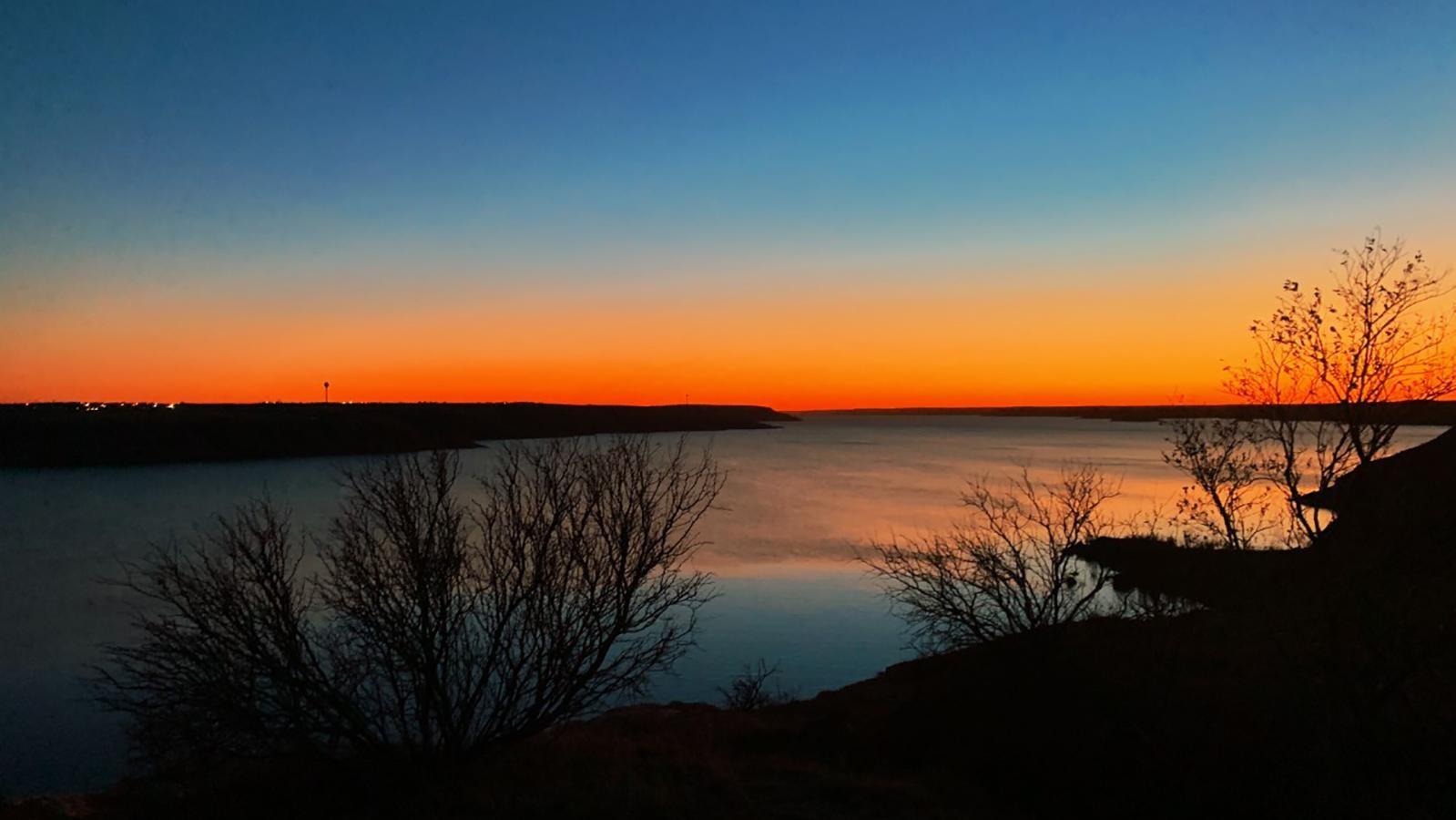
Flathead Lake: Montana's Crystal Gem
Discover the natural beauty of Flathead Lake in Montana, where crystal-clear waters, majestic mountains, and charming towns create the perfect vacation spot.
Flathead Lake, located in northwest Montana, is a stunning natural wonder that offers visitors an array of outdoor activities and breathtaking scenery. As the largest natural freshwater lake west of the Mississippi, Flathead Lake spans over 200 square miles with depths reaching up to 370 feet. The crystal-clear waters are perfect for swimming, boating, and fishing, making it a paradise for water enthusiasts and nature lovers alike. Surrounded by the majestic Rocky Mountains, Flathead Lake provides a picturesque backdrop that captivates every traveler. The lake is dotted with charming towns such as Polson and Bigfork, each offering unique experiences, from local art galleries and theaters to quaint shops and farm-to-table dining. For those seeking adventure, Wild Horse Island State Park is a must-visit. Accessible only by boat, this island is home to a herd of wild horses, bighorn sheep, and a variety of bird species, offering a serene escape into nature. Flathead Lake is not just about water-based activities; the surrounding area is rich with hiking trails, campgrounds, and opportunities for wildlife viewing. The nearby Flathead National Forest and Glacier National Park add to the region's allure, providing endless possibilities for exploration. Whether you're looking to relax by the water, embark on a hiking adventure, or immerse yourself in local culture, Flathead Lake is the perfect destination for a memorable getaway.
Local tips in Flathead Lake
- Visit in late spring to early fall for the best weather and outdoor activities.
- Bring or rent a boat to fully explore the lake and reach Wild Horse Island.
- Check out local farmers' markets for fresh produce and handmade goods.
- Book accommodations early, especially during peak tourist season.
- Don't forget your camera – the scenic views are spectacular!
Flathead Lake: Montana's Crystal Gem
Flathead Lake, located in northwest Montana, is a stunning natural wonder that offers visitors an array of outdoor activities and breathtaking scenery. As the largest natural freshwater lake west of the Mississippi, Flathead Lake spans over 200 square miles with depths reaching up to 370 feet. The crystal-clear waters are perfect for swimming, boating, and fishing, making it a paradise for water enthusiasts and nature lovers alike. Surrounded by the majestic Rocky Mountains, Flathead Lake provides a picturesque backdrop that captivates every traveler. The lake is dotted with charming towns such as Polson and Bigfork, each offering unique experiences, from local art galleries and theaters to quaint shops and farm-to-table dining. For those seeking adventure, Wild Horse Island State Park is a must-visit. Accessible only by boat, this island is home to a herd of wild horses, bighorn sheep, and a variety of bird species, offering a serene escape into nature. Flathead Lake is not just about water-based activities; the surrounding area is rich with hiking trails, campgrounds, and opportunities for wildlife viewing. The nearby Flathead National Forest and Glacier National Park add to the region's allure, providing endless possibilities for exploration. Whether you're looking to relax by the water, embark on a hiking adventure, or immerse yourself in local culture, Flathead Lake is the perfect destination for a memorable getaway.
When is the best time to go to Flathead Lake?
Unmissable attractions to see
Glacier National Park
Explore the stunning landscapes and unique wildlife of Glacier National Park, a breathtaking destination in Montana's Rocky Mountains.
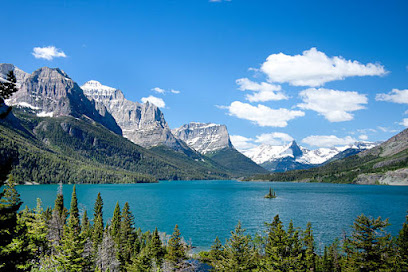
Flathead National Forest
Explore the breathtaking landscapes and outdoor adventures waiting for you at Flathead National Forest in the heart of Montana.
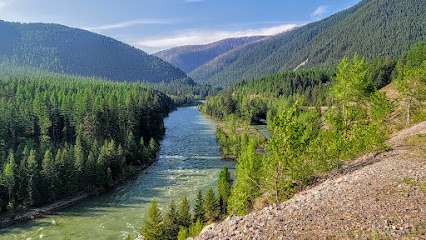
Woodland Park
Explore Woodland Park in Kalispell, Montana – a serene park offering lush greenery, walking trails, and a perfect escape for families and nature lovers.
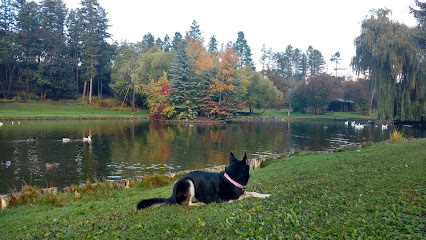
Montana Vortex and House of Mystery
Explore the Montana Vortex and House of Mystery, where gravity defies the ordinary and optical illusions create unforgettable experiences.
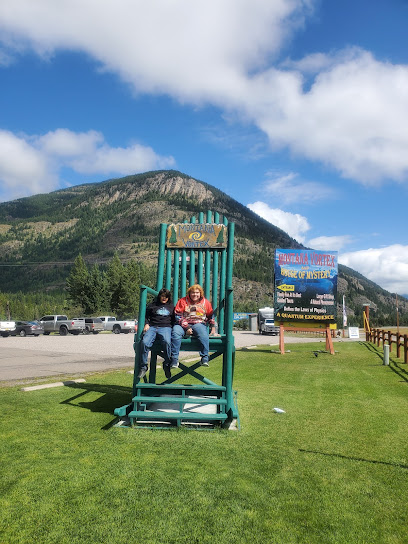
Miracle of America Museum
Explore the rich history of America at the Miracle of America Museum in Polson, Montana, featuring over 20,000 artifacts and captivating exhibits.

Lone Pine State Park
Explore Lone Pine State Park - A picturesque blend of hiking trails, stunning vistas, and family-friendly picnic spots in Montana's natural beauty.
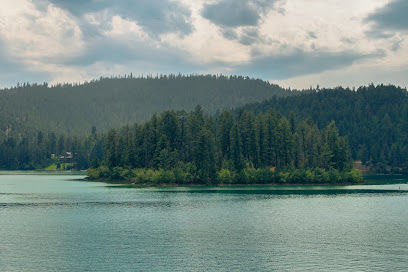
Volunteer Park
Explore the serene beauty of Volunteer Park in Lakeside, Montana - a perfect outdoor retreat for nature lovers and families.
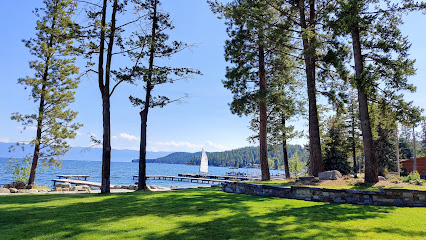
Sacred Waters Brewing Company
Experience the flavors of Montana at Sacred Waters Brewing Company, where craft beer meets local charm in Kalispell.

Conrad Mansion Museum
Explore the Conrad Mansion Museum in Kalispell, Montana, where history and elegance come alive in a beautifully preserved 19th-century home.

Amazing Fun Center
Discover endless fun and adventure at Amazing Fun Center, the ultimate destination for family entertainment in Columbia Falls, Montana.
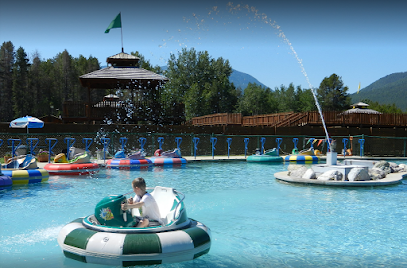
West Shore / Flathead Lake State Park
Experience the serene beauty and diverse outdoor activities at West Shore / Flathead Lake State Park, a perfect getaway for nature lovers and adventure seekers.
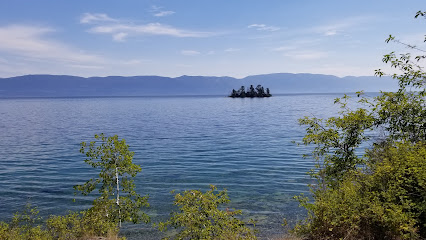
Majestic Valley Arena
Experience the thrill of equestrian sports at Majestic Valley Arena, Kalispell's premier venue for rodeos and horse events amidst stunning Montana scenery.
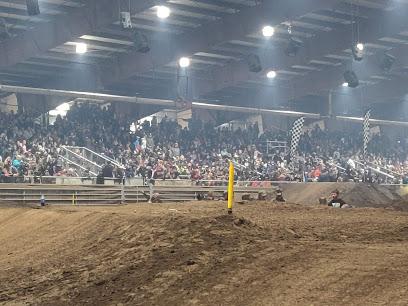
Lawrence Park
Explore Lawrence Park in Kalispell, Montana – a scenic retreat with walking trails, playgrounds, and stunning mountain views perfect for relaxation and outdoor activities.
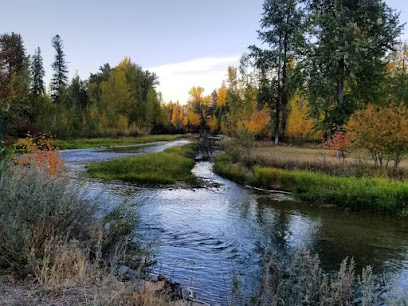
Sacajawea Park
Experience the serenity and outdoor adventures at Sacajawea Park, a picturesque destination along the shores of Flathead Lake in Polson, Montana.
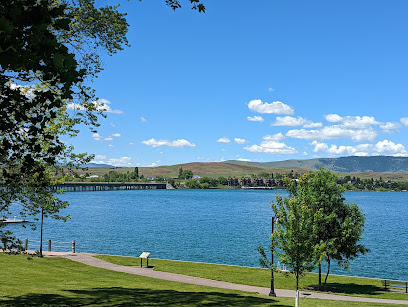
Big Arm / Flathead Lake State Park
Explore the wonders of Big Arm / Flathead Lake State Park, where breathtaking landscapes meet endless outdoor adventure in Montana.
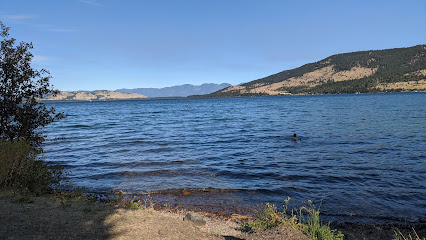
Essential places to dine
McDonald's
Discover the convenience of McDonald's in Polson for delicious fast food favorites including breakfast options and coffee delights.
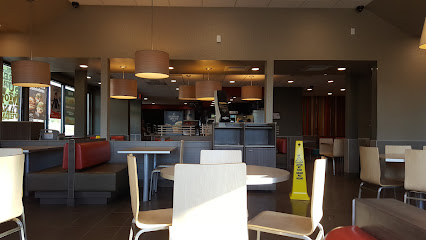
Subway
Enjoy deliciously fresh sandwiches at Subway in Polson, MT - perfect for travelers exploring Flathead Lake's stunning beauty.
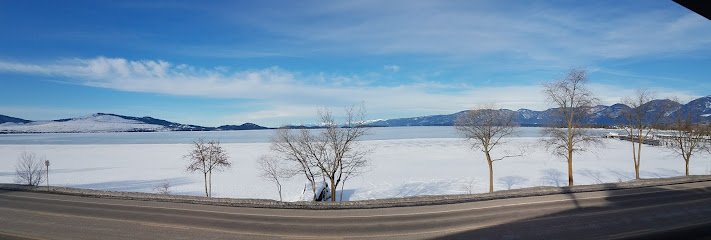
Great Northern Gourmet
Experience the culinary delights of Great Northern Gourmet in Bigfork, Montana - where local flavors meet exquisite dining.
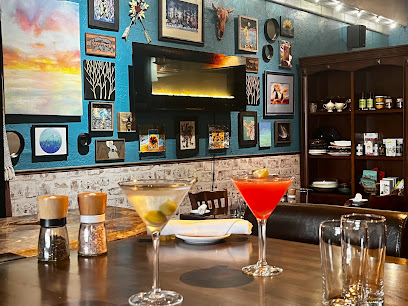
Markets, malls and hidden boutiques
Kehoe's Agate Shop
Explore Kehoe's Agate Shop in Bigfork, Montana, where unique gemstones and handcrafted jewelry come together to create unforgettable treasures.
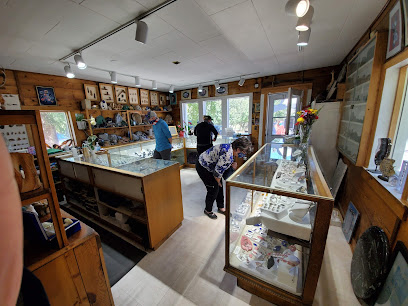
Electric Buffalo Gallery
Explore Electric Buffalo Gallery: a treasure trove of unique jewelry, Native American artistry, and local art in the heart of Bigfork, Montana.
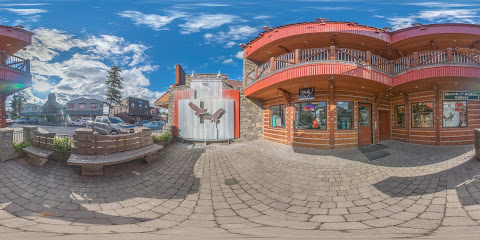
handMADE Montana
Explore the artistic heart of Polson at handMADE Montana, where local artisans showcase their finest creations in a charming setting.
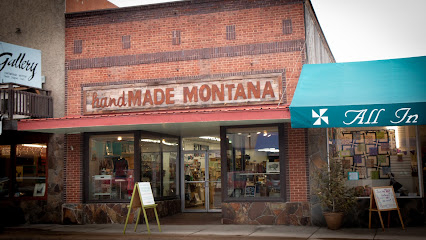
Bigfork Bay Gift
Explore Bigfork Bay Gift in Montana for unique treasures, local crafts, and the perfect memento to cherish your visit.
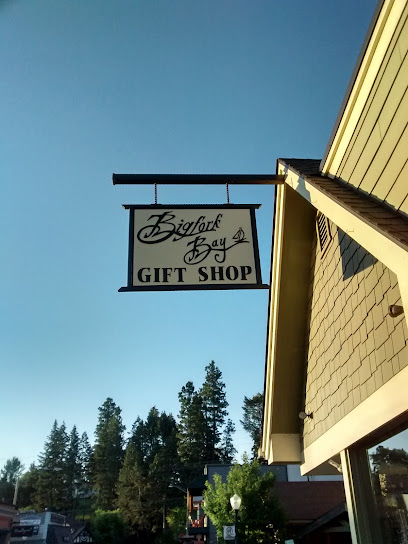
Electric Avenue Gifts
Explore Electric Avenue Gifts in Bigfork, Montana, where unique local treasures and artisan creations await every visitor.
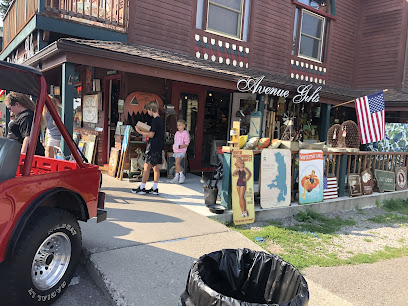
Flathead Lake Herb - Polson, MT Dispensary
Discover quality cannabis products amidst the breathtaking beauty of Flathead Lake at Polson's renowned cannabis store, Flathead Lake Herb.
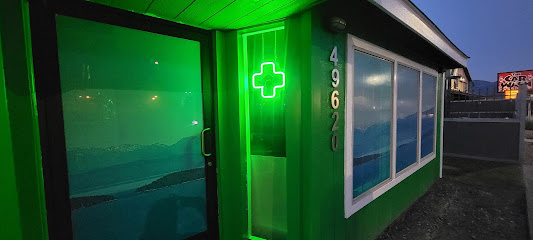
S M Bradford Co
Discover timeless fashion and unique styles at S M Bradford Co, a premier clothing store in Bigfork, Montana, catering to both men and women.
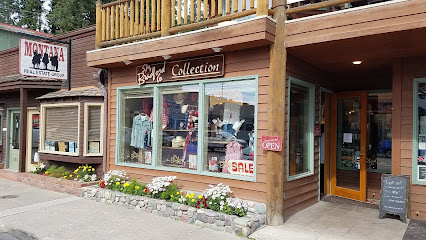
Second Nature Gifts and Goods
Explore the charm of Polson, Montana at Second Nature Gifts and Goods, where unique treasures and local artistry come together in a delightful gift shop.
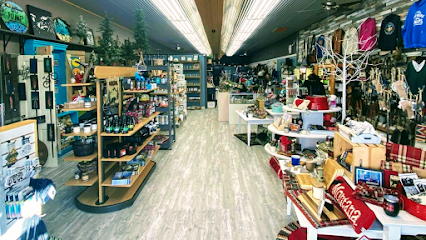
Eva Gates Homemade Preserves
Discover the flavors of Montana at Eva Gates Homemade Preserves, where artisanal jams and local gifts await every visitor.
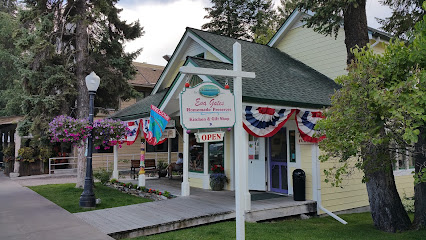
The Good Stuff Botanicals
Discover the charm of natural beauty at The Good Stuff Botanicals in Bigfork, Montana, offering unique organic products and personalized service.

The Montana Scene
Discover unique gifts and local artistry at The Montana Scene in Bigfork, an essential stop for tourists seeking authentic Montana treasures.
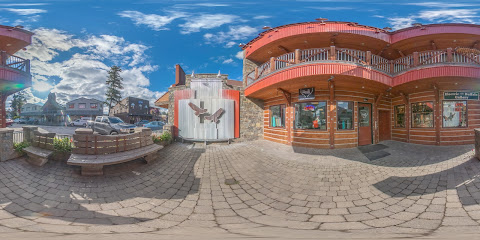
Northalla Work Shop
Discover Northalla Work Shop, a vibrant craft store and artist hub offering unique handmade items and engaging workshops for all creativity lovers.
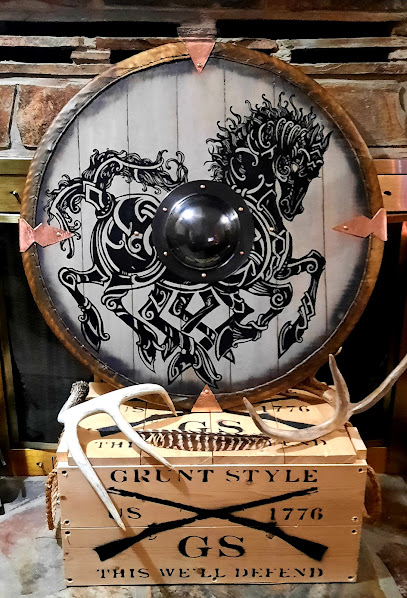
Sandpiper Art Gallery & Gifts
Explore the artistic heart of Polson at Sandpiper Art Gallery & Gifts, where local talent meets unique gift shopping in a charming setting.
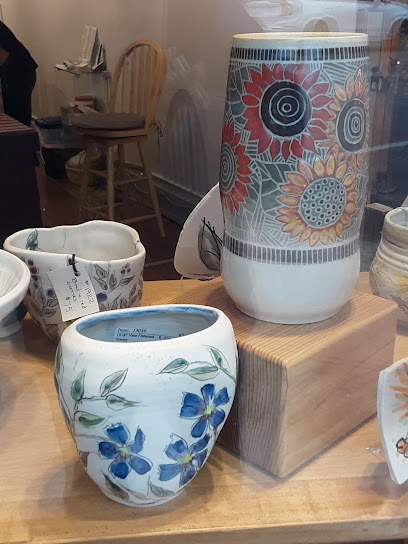
247 Vintage and Thrift
Explore 247 Vintage and Thrift in Lakeside, Montana – a hidden gem for vintage lovers with unique finds and sustainable shopping.
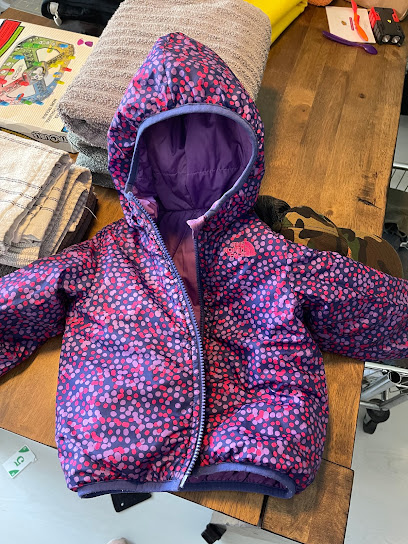
Sault MT Apparel & Fine Goods Bigfork
Discover timeless fashion and unique gifts at Sault MT Apparel & Fine Goods in Bigfork, Montana, where style meets local charm.
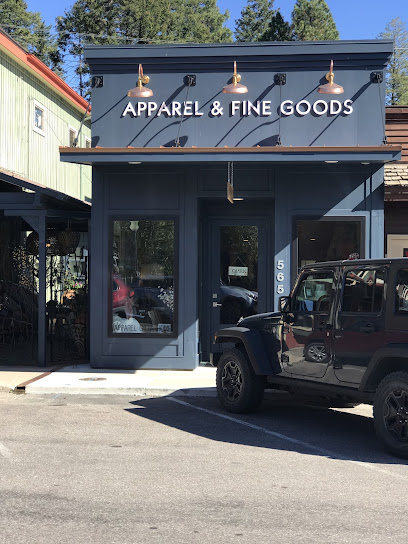
Essential bars & hidden hideouts
Tamarack Brewing Company
Experience the charm of Tamarack Brewing Company, where craft beer meets delectable American cuisine in picturesque Lakeside, Montana.
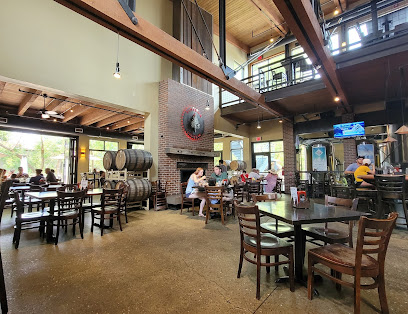
The Raven
Experience the best of Bigfork dining at The Raven, where delicious cuisine meets stunning lakeside views and vibrant live music.
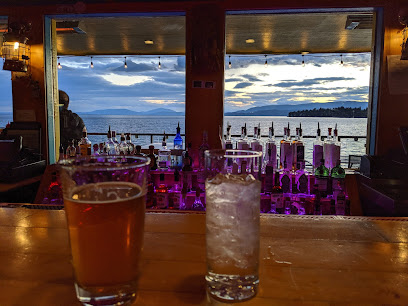
The Sitting Duck
Discover the perfect blend of dining and gaming at The Sitting Duck, a grill and casino in scenic Bigfork, Montana, offering great food and fun.
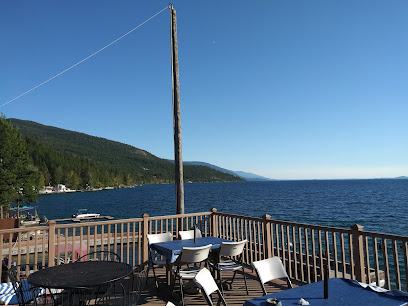
Flathead Lake Brewing Co. Pubhouse
Discover the best of Montana craft beer and American cuisine at Flathead Lake Brewing Co. Pubhouse in beautiful Bigfork.
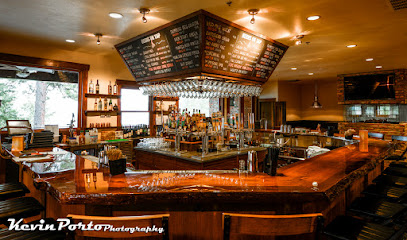
East Shore Smoke House
Experience the best of Montana's barbecue at East Shore Smoke House, where flavors are smoked to perfection and family dining is celebrated.
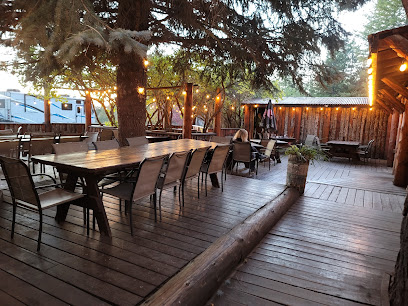
Split Rock Restaurant
Discover a cozy American restaurant in Bigfork, MT, offering breakfast and lunch with stunning views of Montana's natural beauty.
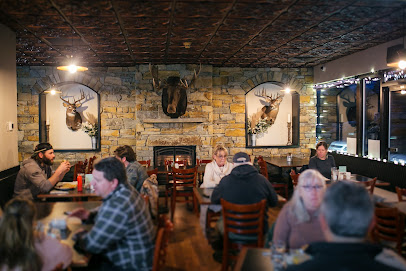
Sportspage Bowl Grill & Lounge
Discover fun and excitement at Sportspage Bowl Grill & Lounge, where sports, bowling, and delicious food come together in Polson, Montana.
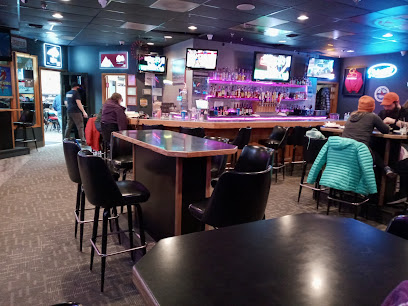
The Shoe - Lakeview Dining & Spirits
Experience stunning lakeside dining at The Shoe, a favorite bar and restaurant in Polson, Montana, known for delicious food and a vibrant atmosphere.
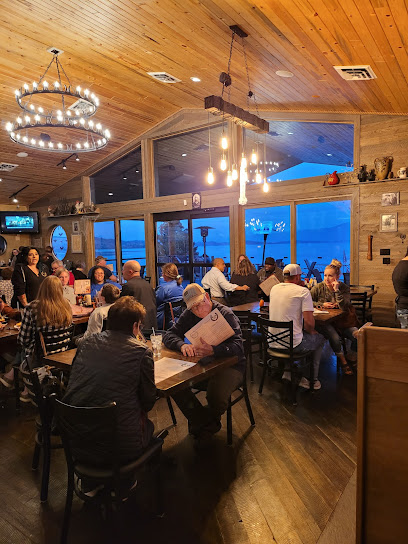
Harbor Grille
Experience delicious cuisine with breathtaking views at Harbor Grille, Lakeside's premier restaurant on the shores of Flathead Lake.
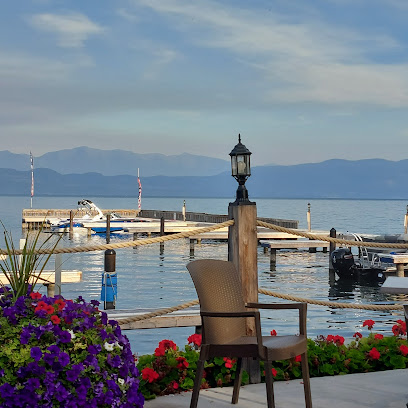
Spinnaker
Experience Lakeside's vibrant dining scene at Spinnaker, your go-to Grill and Bar for delicious meals and stunning lake views.
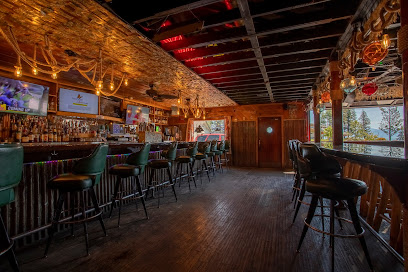
Garden Bar
Discover the Garden Bar in Bigfork, MT - a perfect blend of local brews, stunning views, and a welcoming atmosphere for all.
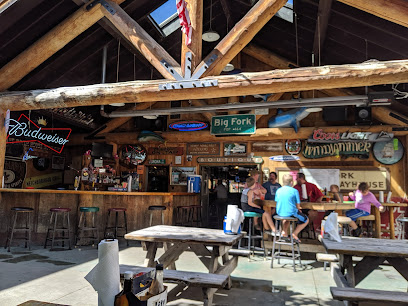
Mavericks Roadhouse & Casino
Experience the ultimate destination for dining, gaming, and live entertainment at Mavericks Roadhouse & Casino in beautiful Lakeside, Montana.
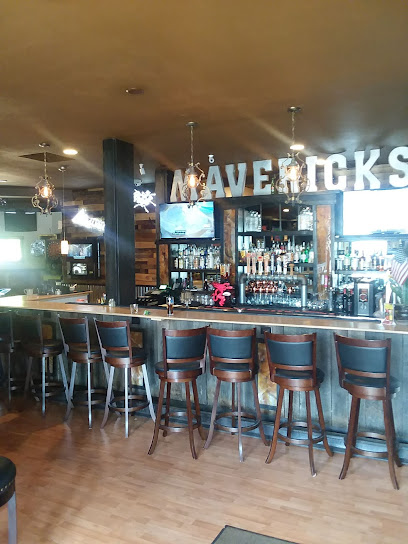
Buffalo Saloon and Casino
Experience the best grill and casino in Bigfork, Montana, where delicious food meets vibrant entertainment in a welcoming atmosphere.
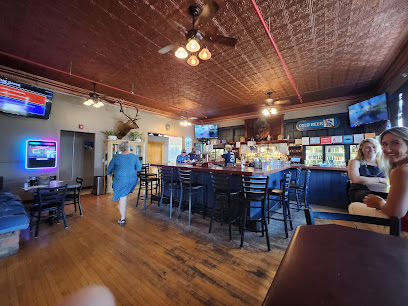
Perfect Shot Tavern
Discover the Perfect Shot Tavern in Polson, Montana: a cozy bar and pub offering craft beers, hearty meals, and a welcoming atmosphere for all.
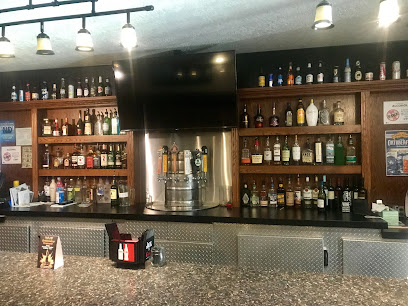
Falling Waters
Discover Falling Waters in Polson, Montana - a grill serving delicious local cuisine amidst breathtaking natural beauty.

Local Phrases about Flathead Lake
-
- HelloKyiyo
[kee-yoh] - GoodbyeKéxw
[kay-hw] - YesEyo
[ay-yoh] - NoNá
[nah] - Please/You're welcomeQ̓ísq̓eym
[kwees-kaym] - Thank youC̓estkecem
[chess-tkech-em] - Excuse me/SorryK̓usuw
[koo-soo] - How are you?Kwáanúšma
[kwa-noosh-ma] - Fine. And you?N̓éʔ
[neh] - Do you speak English?ʔI hʔamn̓áy?
[ee ham-nay] - I don't understandʔI wik̓á
[ee wee-kah]
- HelloKyiyo
-
- I'd like to see the menu, pleaseʔI kʔuyiʔ ki q̓ʔeq̓ n̓ép
[ee kwee-yee kee kwek neep] - I don't eat meatʔI wik̓á n̓eʔ
[ee wee-kah neh] - Cheers!Q̓éla
[kay-la] - I would like to pay, pleaseʔI kʔuyiʔ ki q̓ʔeq̓ n̓ép
[ee kwee-yee kee kwek neep]
- I'd like to see the menu, pleaseʔI kʔuyiʔ ki q̓ʔeq̓ n̓ép
-
- Help!Híh
[hee] - Go away!Kéxw
[kay-hw] - Call the Police!Níʔ
[nee] - Call a doctor!Níʔ
[nee] - I'm lostʔI wik̓á n̓éʔ
[ee wee-kah neh] - I'm illʔI wik̓á n̓éʔ
[ee wee-kah neh]
- Help!Híh
-
- I'd like to buy...ʔI kʔuyiʔ ki...
[ee kwee-yee kee] - I'm just lookingʔI wik̓á ʔéʔ
[ee wee-kah ay] - How much is it?W̓é n̓éʔ?
[way neh] - That's too expensiveʔI wik̓á ʔéʔ
[ee wee-kah ay] - Can you lower the price?N̓éʔ ʔI...
[neh ee]
- I'd like to buy...ʔI kʔuyiʔ ki...
-
- What time is it?W̓é yú
[way yoo] - It's one o'clockTáx̣
[tah] - Half past (10)Máx̣
[mah] - MorningC̓inú
[chee-noo] - Afternoonʔɬq̓ú
[uhl-kwoo] - Eveningʔɬn̓é
[uhl-nay] - YesterdayMíx̣ʷ
[meesh-wuh] - TodayʔI k̓íx̣ʷ
[ee kee-meesh-wuh] - TomorrowWíx̣ʷ
[weesh-wuh] - 1St̓í
[stee] - 2Nq̓ʷé
[n-kway] - 3Sq̓ʷe
[skway] - 4Sq̓ey
[skay] - 5Pq̓ʷé
[pkway] - 6Pq̓ey
[pkay] - 7St̓íl
[stee-ul] - 8Nq̓ʷil
[n-kweel] - 9Sq̓ʷil
[skweel] - 10Sq̓eyl
[skay-ul]
- What time is it?W̓é yú
-
- Where's a/the...?ƛ̓á
[tlah] - What's the address?ƛ̓á
[tlah] - Can you show me (on the map)?Q̓ítk̓
[keet-k] - When's the next (bus)?W̓é yú
[way yoo] - A ticket (to ....)K̓á
[kah]
- Where's a/the...?ƛ̓á
History of Flathead Lake
-
Long before European settlers arrived, the area around Flathead Lake was inhabited by the Kootenai and Salish tribes. These indigenous peoples relied on the lake and its surrounding resources for fishing, hunting, and gathering. The lake was not just a source of sustenance but also held spiritual significance, featuring prominently in their myths and legends.
-
Although the Lewis and Clark Expedition did not directly pass through Flathead Lake, their journey in the early 19th century paved the way for further exploration of the Montana region. Their documentation of the area's geography and native populations sparked interest in the region, leading to increased exploration and eventual settlement.
-
The mid-19th century saw the arrival of European settlers, who were drawn by the region's natural beauty and abundant resources. Homesteading opportunities and the promise of fertile land led many to establish farms and ranches around the lake. This period marked the beginning of significant cultural and environmental changes for the area.
-
In 1855, the Hellgate Treaty established the Flathead Indian Reservation, which included the southern half of Flathead Lake. This treaty significantly altered the lives of the native populations, confining them to a smaller area and impacting their traditional ways of life. The reservation remains a significant cultural and historical aspect of the region.
-
Completed in 1938, the Kerr Dam (now known as the Seli’š Ksanka Qlispe’ Dam) is located at the southern end of Flathead Lake. The dam was built to generate hydroelectric power and manage water levels. Its construction had a profound impact on the local ecosystem and the surrounding communities, including the Confederated Salish and Kootenai Tribes, who now jointly manage the dam.
-
Flathead Lake's stunning natural beauty has long been a draw for tourists. The early 20th century saw the development of infrastructure to support tourism, including the establishment of parks, lodges, and marinas. Today, the lake is a popular destination for boating, fishing, and hiking, attracting visitors from all over the world.
-
As tourism and settlement increased, so did concerns about the environmental health of Flathead Lake. In recent decades, efforts have been made to preserve the lake's pristine condition. Initiatives include regulating fishing, controlling invasive species, and monitoring water quality. These efforts are crucial in maintaining the lake's natural beauty and ecological balance.
Flathead Lake Essentials
-
Flathead Lake is located in northwestern Montana. The nearest major airport is Glacier Park International Airport in Kalispell, about 30 miles north of the lake. From Kalispell, you can rent a car or take a shuttle service to reach the lake. Alternatively, you can fly into Missoula International Airport, which is approximately 70 miles south of the lake. From Missoula, renting a car is the most convenient option.
-
To explore Flathead Lake and its surrounding areas, renting a car is highly recommended. Public transportation options are limited. Several rental car companies operate at both Glacier Park International Airport and Missoula International Airport. For short distances, local taxi services and ride-sharing apps like Uber and Lyft are available. Cycling is also a popular way to explore the area, with several bike rental shops around.
-
The official currency is the United States Dollar (USD). Credit cards are widely accepted in most establishments, including hotels, restaurants, and shops. However, it is a good idea to carry some cash for smaller businesses or in more remote areas. ATMs are available in nearby towns like Kalispell, Polson, and Bigfork.
-
Flathead Lake is generally a safe destination for tourists. However, it is advisable to take standard precautions. Avoid leaving valuables in your car and be cautious when exploring remote areas alone. There are no specific high-crime areas targeting tourists, but always stay aware of your surroundings and follow local advice.
-
In case of emergency, dial 911 for immediate assistance. The nearest hospitals are in Kalispell and Polson. It is advisable to have travel insurance that covers medical emergencies. For minor health issues, there are pharmacies in nearby towns where you can purchase over-the-counter medications.
-
Fashion: Do dress comfortably and in layers, as weather can change rapidly. Avoid overly revealing clothing, especially in more conservative areas. Religion: Do be respectful of local customs and traditions. Public Transport: Do be respectful and patient, as public transport options are limited. Greetings: Do greet people with a smile and a friendly 'hello.' Montanans are generally very friendly and approachable. Eating & Drinking: Do try local delicacies, especially fresh fish from the lake. Don't forget to tip your servers, as tipping is customary in the United States.
-
To experience Flathead Lake like a local, consider visiting during the off-season to avoid crowds. Attend local events like farmers' markets and festivals to get a taste of the community spirit. Renting a kayak or paddleboard is a great way to explore the lake's serene waters. Don't miss out on local eateries offering fresh, locally-sourced cuisine. Engaging with locals can provide insights into the best spots to visit and hidden gems in the area.
Nearby Cities to Flathead Lake
-
Things To Do in Kalispell
-
Things To Do in Columbia Falls
-
Things To Do in Whitefish
-
Things To Do in Glacier National Park
-
Things To Do in Missoula
-
Things To Do in Libby
-
Things To Do in Sandpoint
-
Things To Do in Coeur d'Alene
-
Things To Do in Helena
-
Things To Do in Great Falls
-
Things To Do in Newport
-
Things To Do in Butte
-
Things To Do in Spokane
-
Things To Do in Bozeman
-
Things To Do in Big Sky

